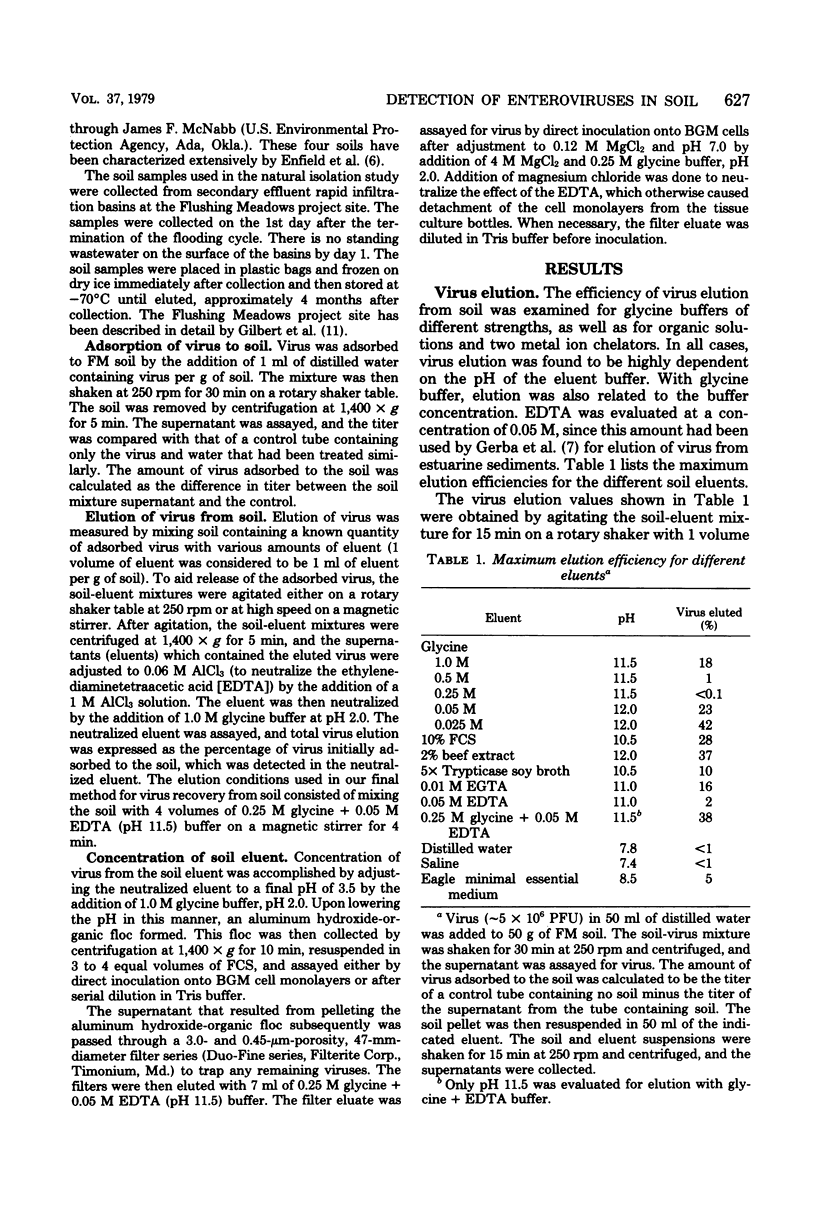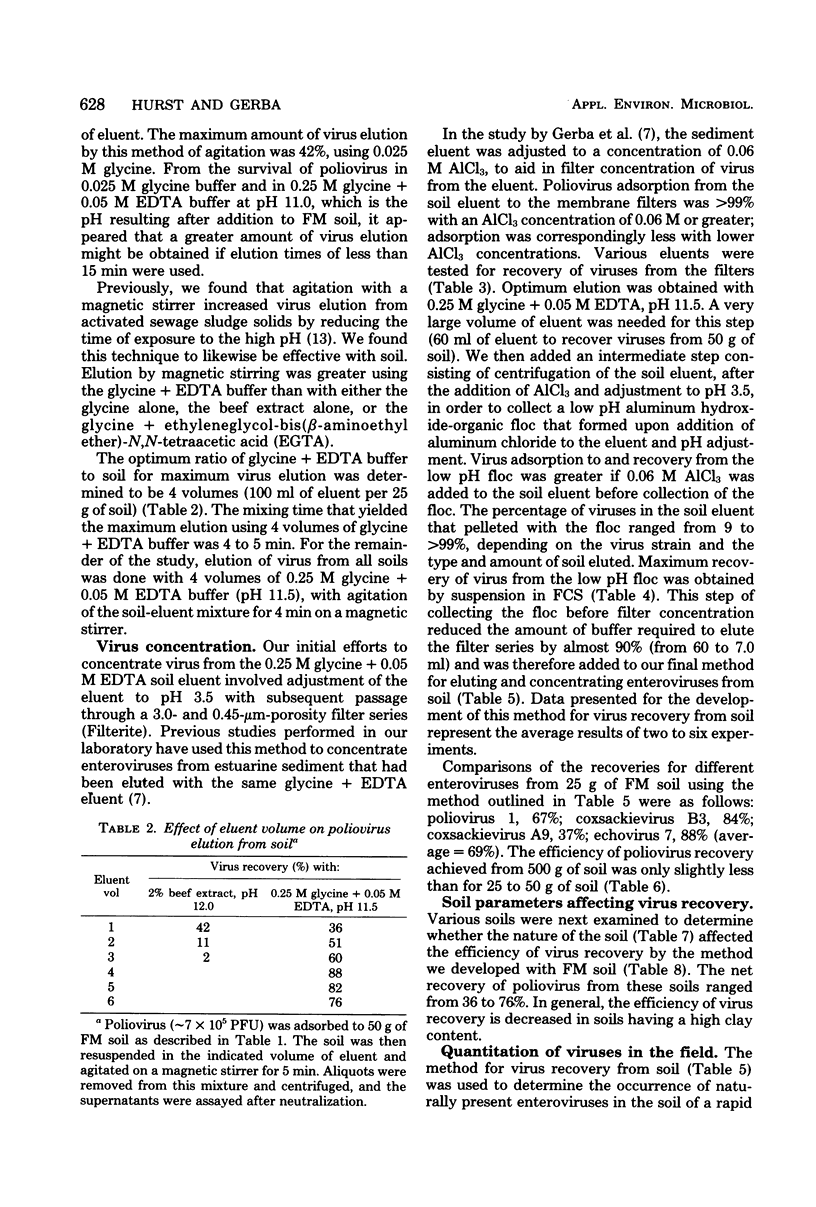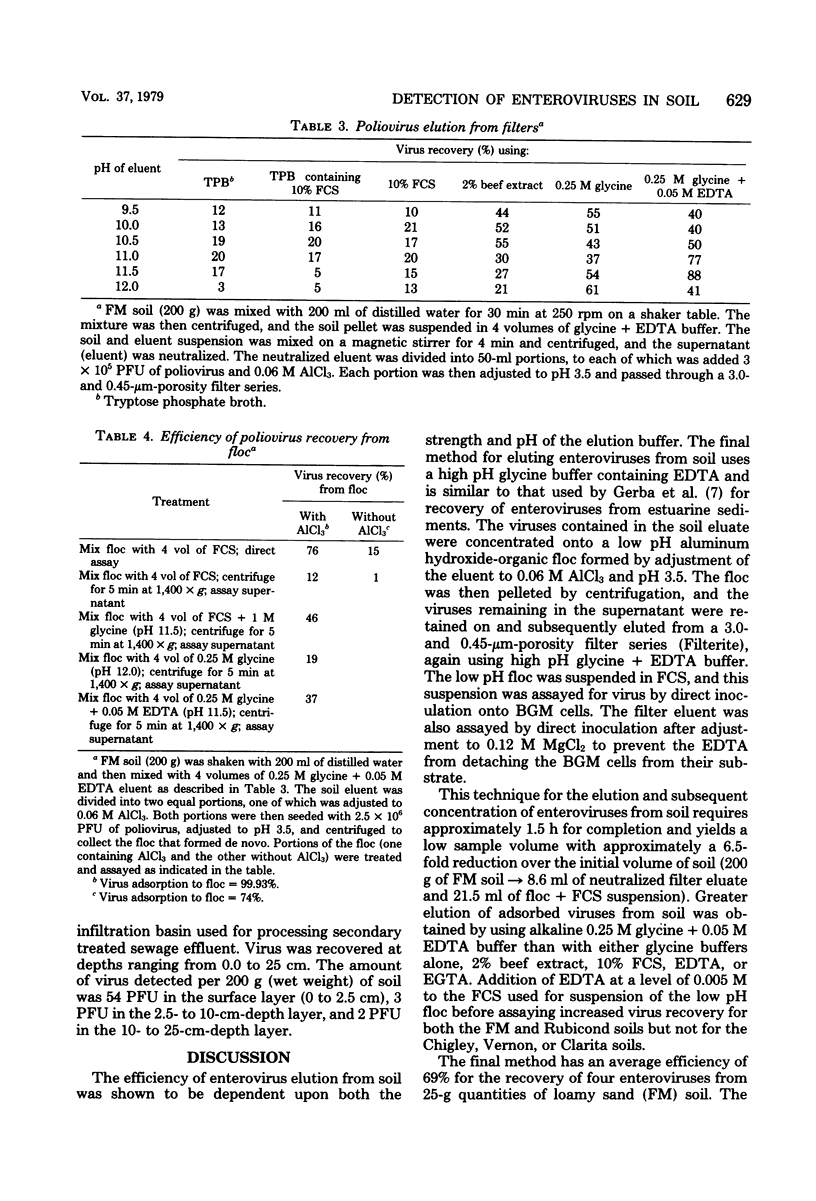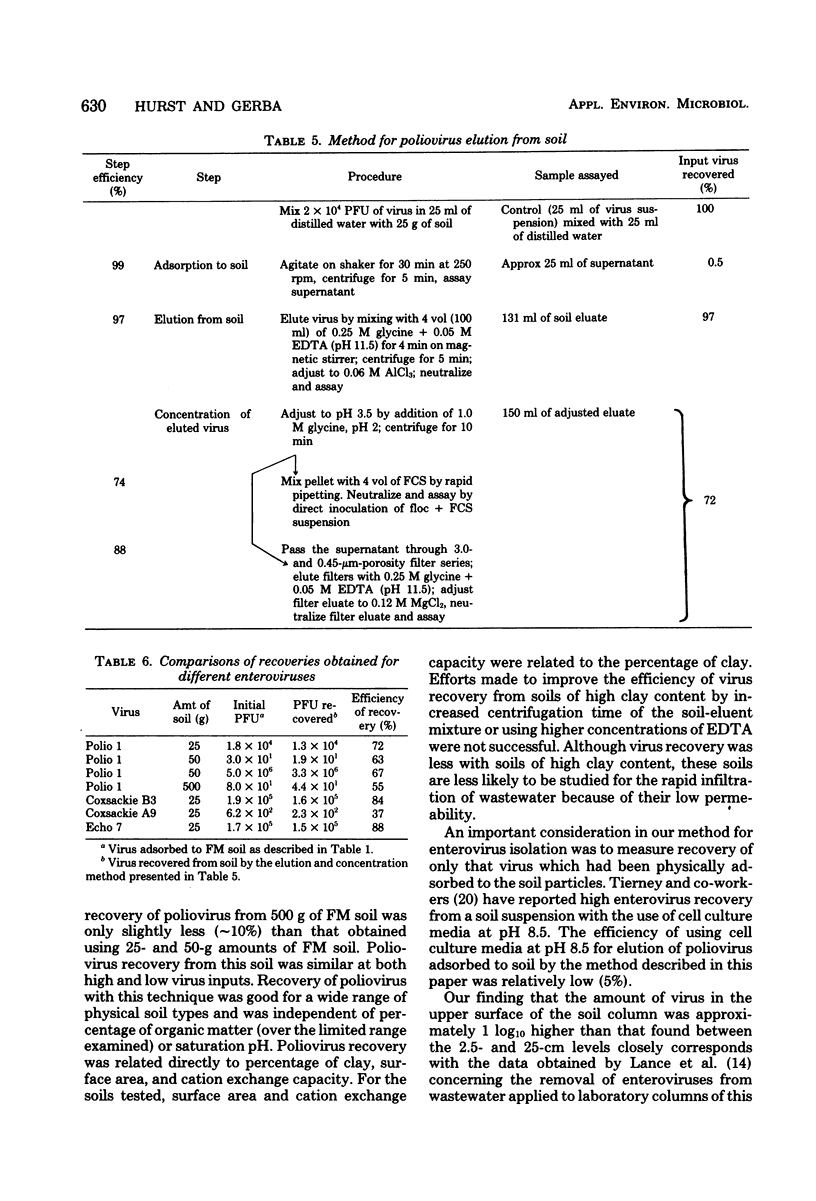Abstract
A method is described for efficiently concentrating enteroviruses from soil. Viruses were eluted from soil by mechanical agitation in high pH glycine buffer containing ethylenediaminetetraacetic acid. The eluted viruses were concentrated on a floc that formed de novo upon adjustment of the soil eluate to 0.06 M aluminum chloride and pH 3.5. Viruses not pelleted with the floc were concentrated by adsorption to and elution from membrane filters. This method yielded an average efficiency of 66% recovery from loamy sand soil for four enteroviruses. Virus recovery from soil was consistently high, with samples ranging in size from 25 to 500 g. The method was used successfully to isolate naturally occurring viruses from soil beneath a wastewater land treatment site. Recovery of enteroviruses by this method form different types of soil was dependent on percentage of clay, surface area, and cation exchange capacity. Recovery was not dependent on soil saturation pH or on percentage of organic matter. This method should prove useful for studying enterovirus migration and survival during the land application of domestic sewage.
Full text
PDF






Selected References
These references are in PubMed. This may not be the complete list of references from this article.
- BAGDASARYAN G. A. SURVIVAL OF VIRUSES OF THE ENTEROVIRUS GROUP (POLIOMYELITIS, ECHO, COXSACKIE) IN SOIL AND ON VEGETABLES. J Hyg Epidemiol Microbiol Immunol. 1964;8:497–505. [PubMed] [Google Scholar]
- Duboise S. M., Moore B. E., Sagik B. P. Poliovirus survival and movement in a sandy forest soil. Appl Environ Microbiol. 1976 Apr;31(4):536–543. doi: 10.1128/aem.31.4.536-543.1976. [DOI] [PMC free article] [PubMed] [Google Scholar]
- Gerba C. P., Smith E. M., Melnick J. L. Development of a quantitative method for detecting enteroviruses in estuarine sediments. Appl Environ Microbiol. 1977 Aug;34(2):158–163. doi: 10.1128/aem.34.2.158-163.1977. [DOI] [PMC free article] [PubMed] [Google Scholar]
- Gilbert R. G., Gerba C. P., Rice R. C., Bouwer H., Wallis C., Melnick J. L. Virus and bacteria removal from wastewater by land treatment. Appl Environ Microbiol. 1976 Sep;32(3):333–338. doi: 10.1128/aem.32.3.333-338.1976. [DOI] [PMC free article] [PubMed] [Google Scholar]
- Gilbert R. G., Rice R. C., Bouwer H., Gerba C. P., Wallis C., Melnick J. L. Wastewater renovation and reuse: virus removal by soil filtration. Science. 1976 Jun 4;192(4243):1004–1005. doi: 10.1126/science.1273580. [DOI] [PubMed] [Google Scholar]
- Hurst C. J., Farrah S. R., Gerba C. P., Melnick J. L. Development of quantitative methods for the detection of enteroviruses in sewage sludges during activation and following land disposal. Appl Environ Microbiol. 1978 Jul;36(1):81–89. doi: 10.1128/aem.36.1.81-89.1978. [DOI] [PMC free article] [PubMed] [Google Scholar]
- Lance J. C., Gerba C. P., Melnick J. L. Virus movement in soil columns flooded with secondary sewage effluent. Appl Environ Microbiol. 1976 Oct;32(4):520–526. doi: 10.1128/aem.32.4.520-526.1976. [DOI] [PMC free article] [PubMed] [Google Scholar]
- Tierney J. T., Sullivan R., Larkin E. P. Persistence of poliovirus 1 in soil and on vegetables grown in soil previously flooded with inoculated sewage sludge or effluent. Appl Environ Microbiol. 1977 Jan;33(1):109–113. doi: 10.1128/aem.33.1.109-113.1977. [DOI] [PMC free article] [PubMed] [Google Scholar]
- Wellings F. M., Lewis A. L., Mountain C. W., Pierce L. V. Demonstration of virus in groundwater after effluent discharge onto soil. Appl Microbiol. 1975 Jun;29(6):751–757. doi: 10.1128/am.29.6.751-757.1975. [DOI] [PMC free article] [PubMed] [Google Scholar]


